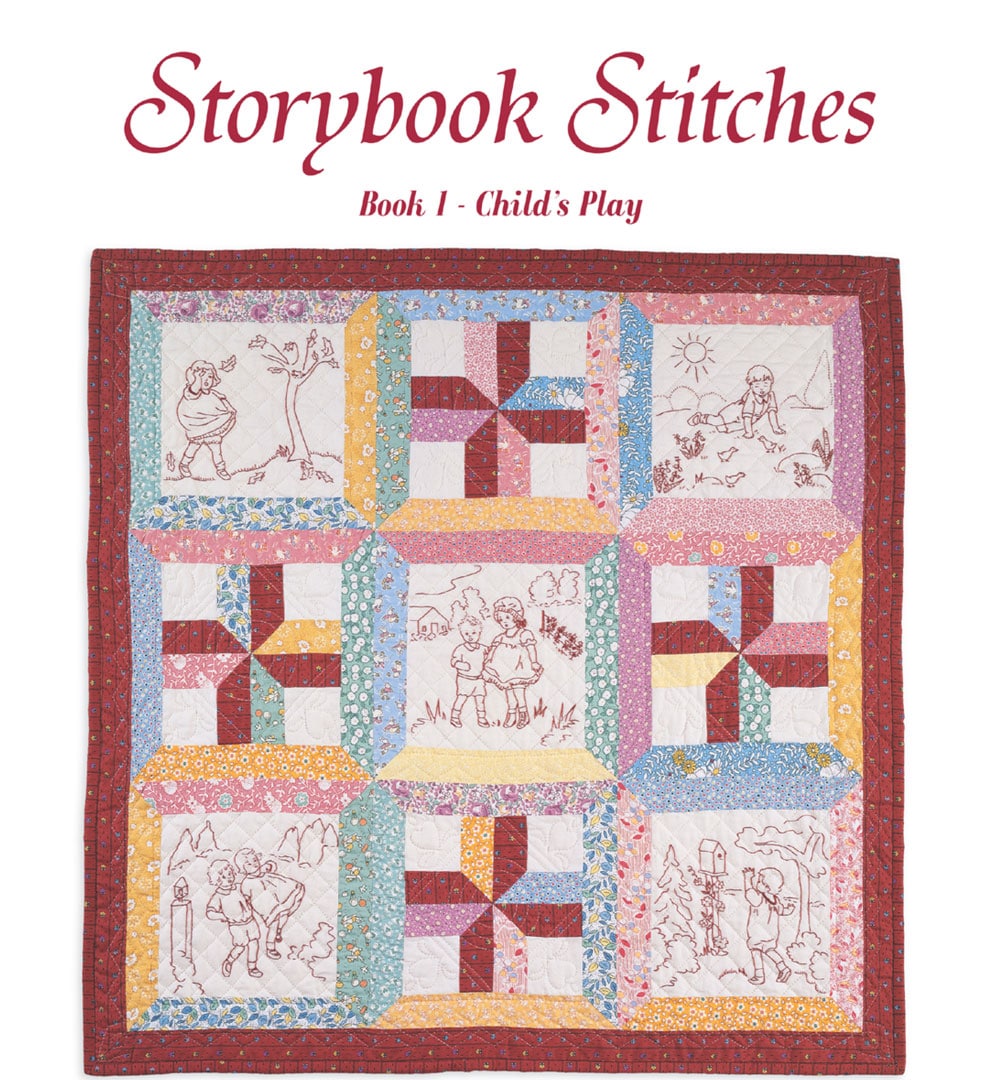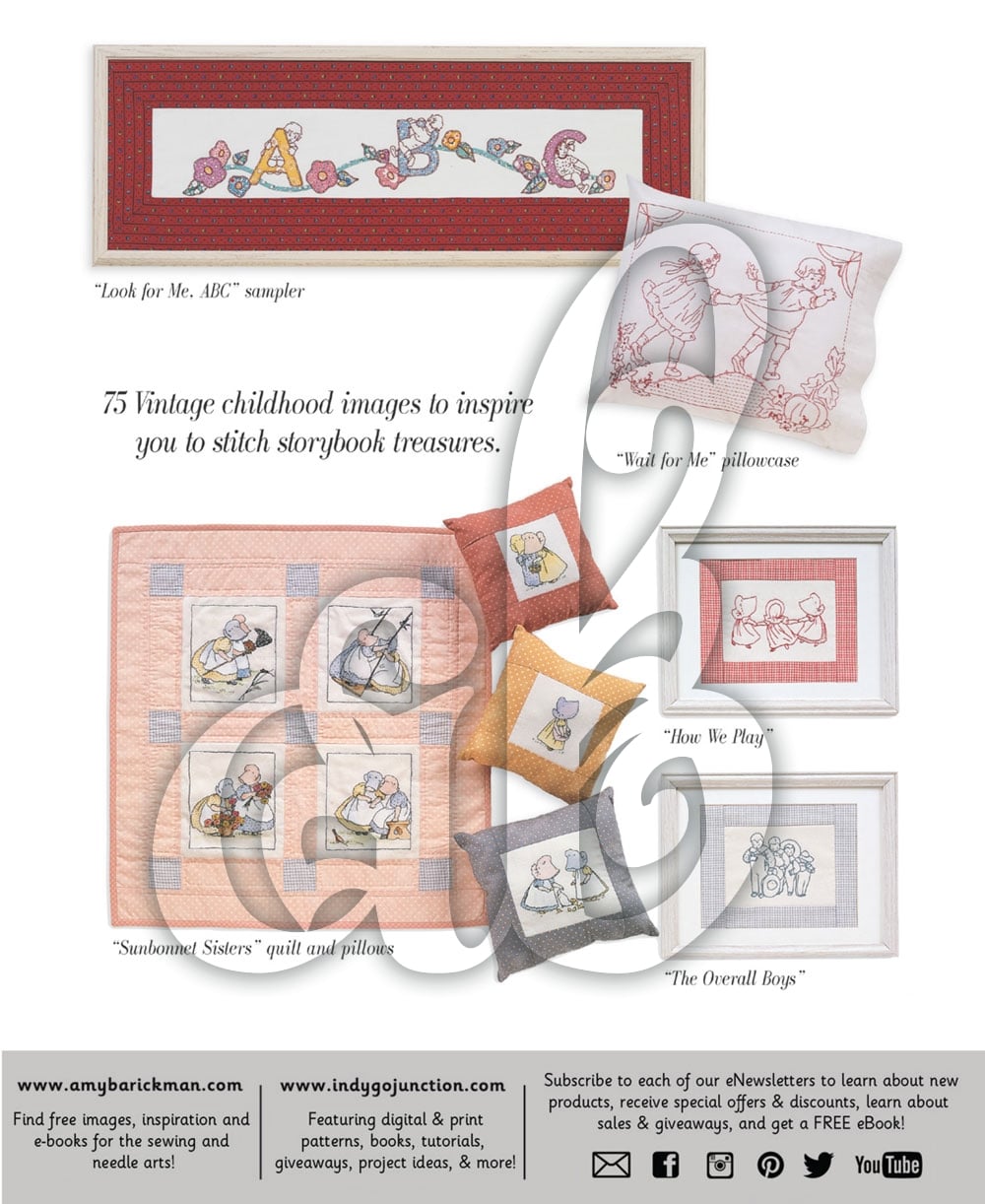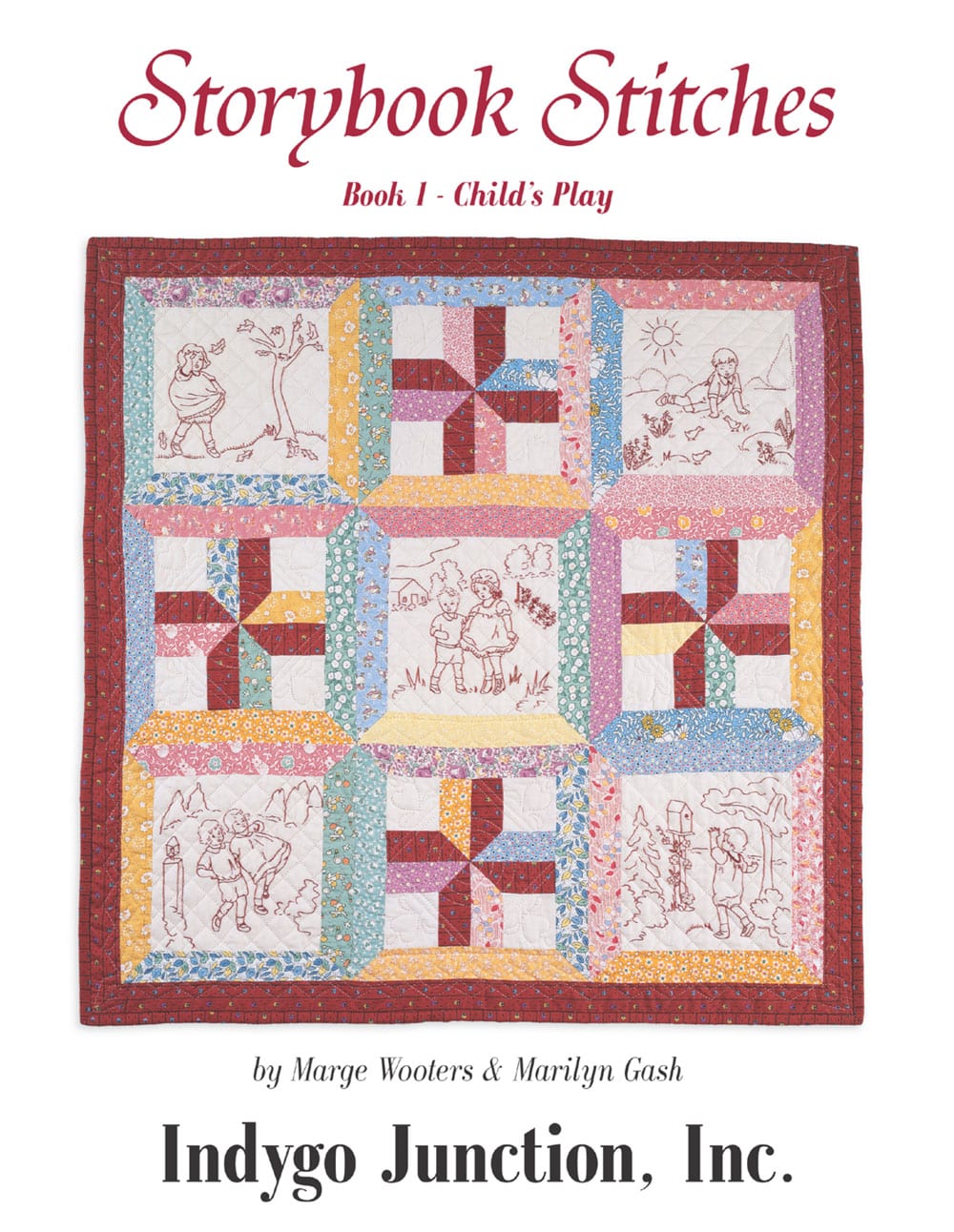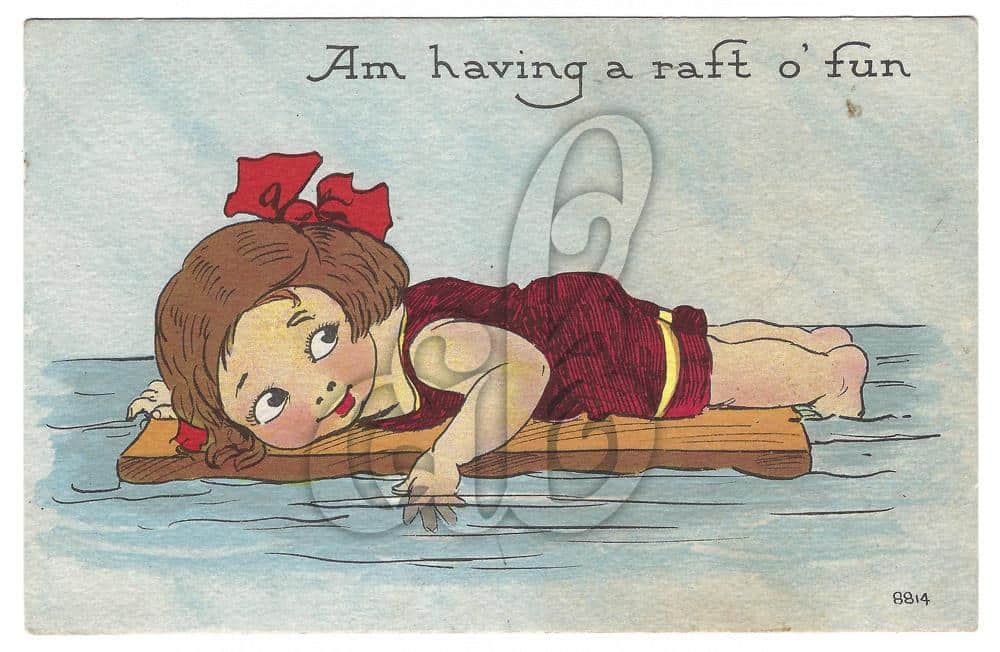My travels Up North offered me a chance to experience the beauty in nature on a daily basis. Surrounded by it on the river, paddle boarding or kayaking, I love to explore the river’s treasures above and below the surface. I found one of the most beautiful of nature’s creations, a shell of a mussel a near perfect specimen. Check out the beautiful nacre, pronounced “knacker”, the opalescence coating that covers the interior shell of a mussel or oyster. Literally billions of these shells were made into buttons, mined from rivers throughout the Midwest, the heighth of production was the early 1900’s and Muscatine, Iowa was the hub of the industry. Learn more about the town and it’s Pearl Button Museum in this post.
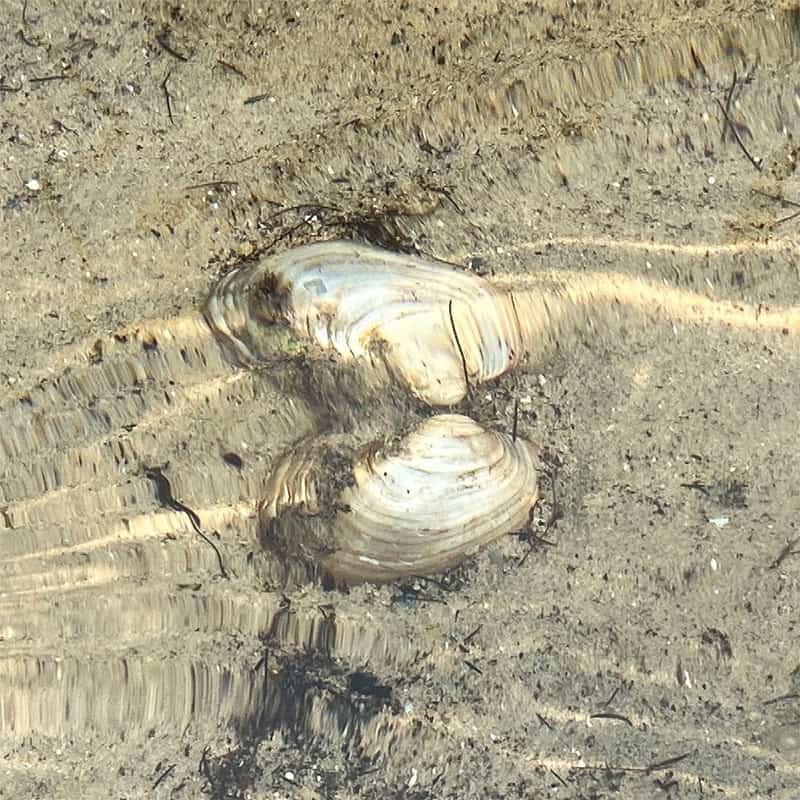
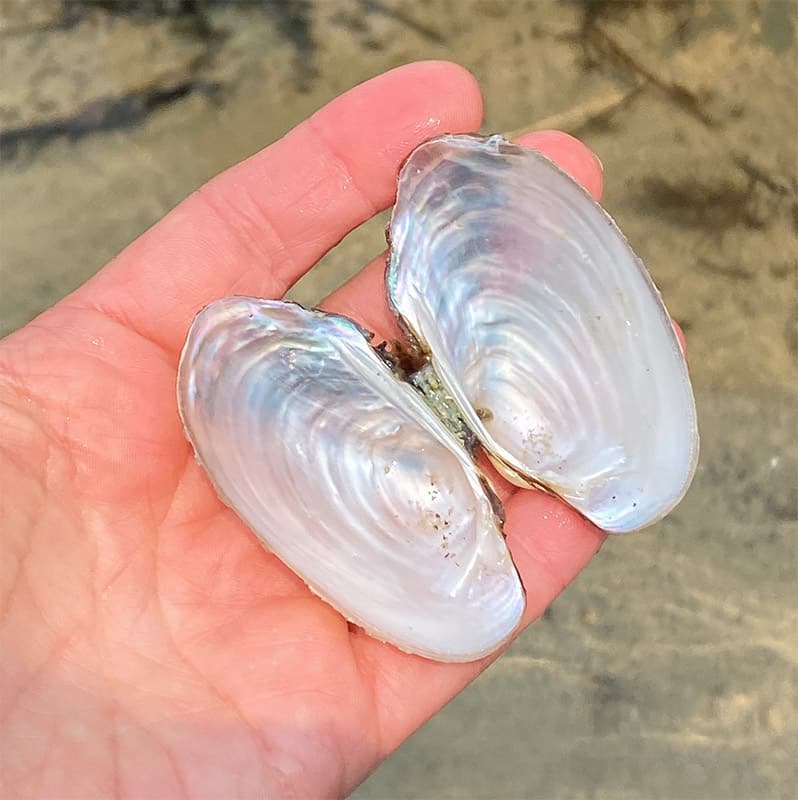
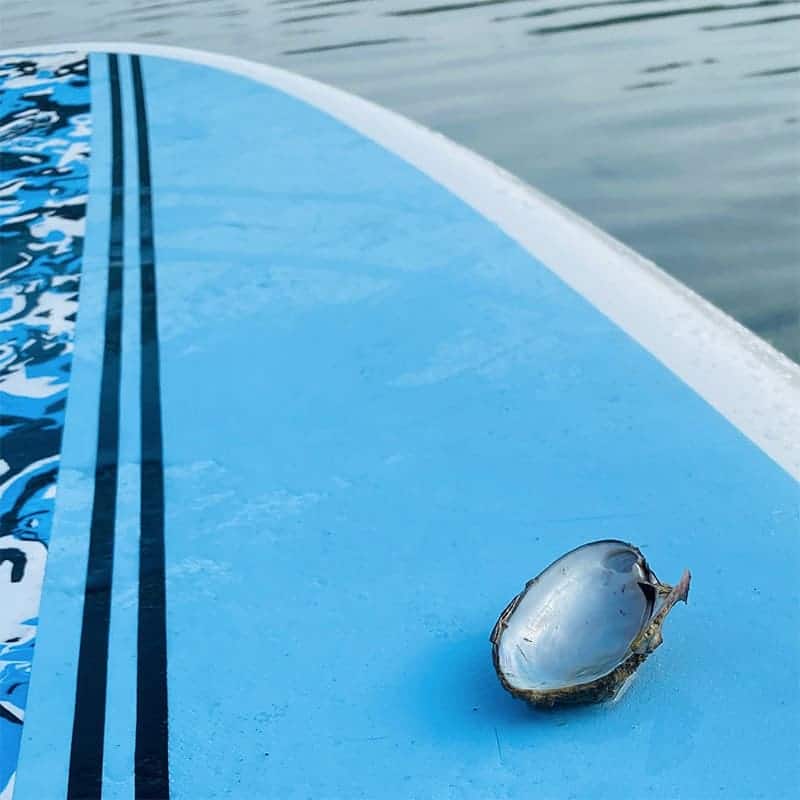
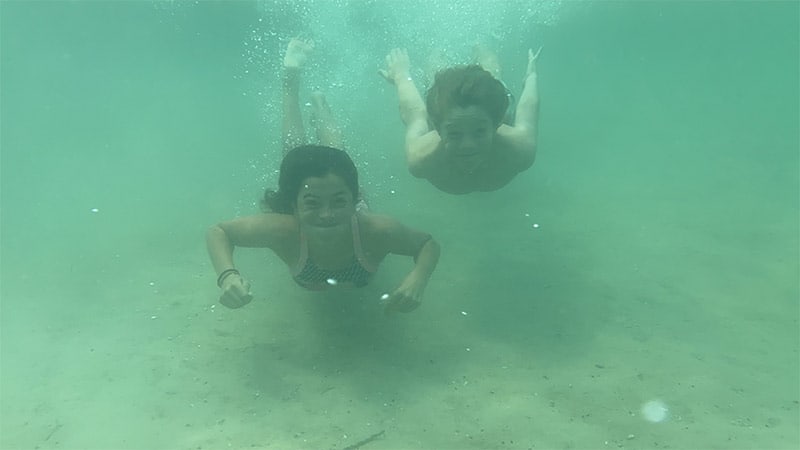
Identifying Buttons
Here are my three tips for identifying pearl buttons versus the look alike plastic versions:
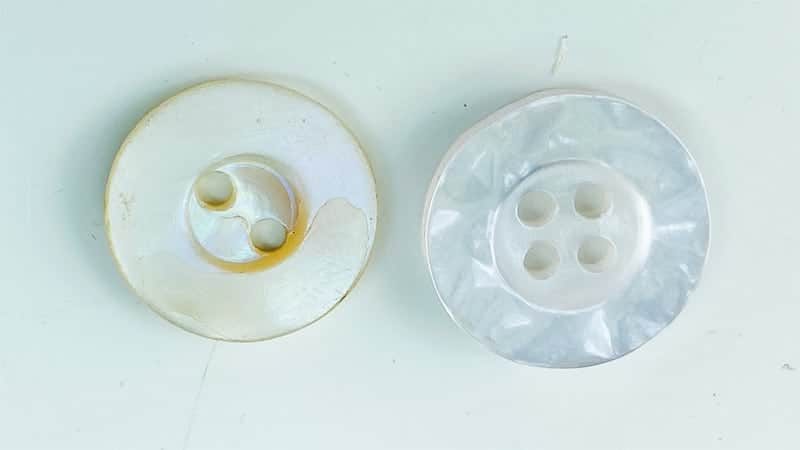
- Look at the back of the button if there is evidence of the shell or inconsistent coloring this is likely a pearl button plastics are much more consistent in their color and texture.
- If a button is cool to touch at room temperature it is likely a pearl button. I like to press the button against my face to confirm the temperature.
- Use a magnifying glass to observe the button coloration and surface texture. Real pearl buttons are each one of a kind.
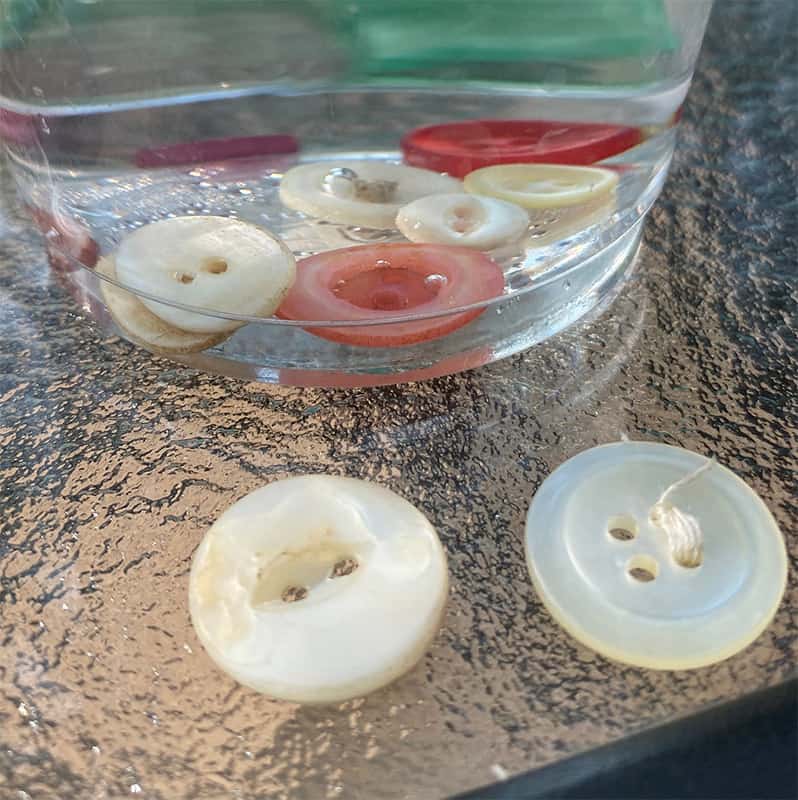
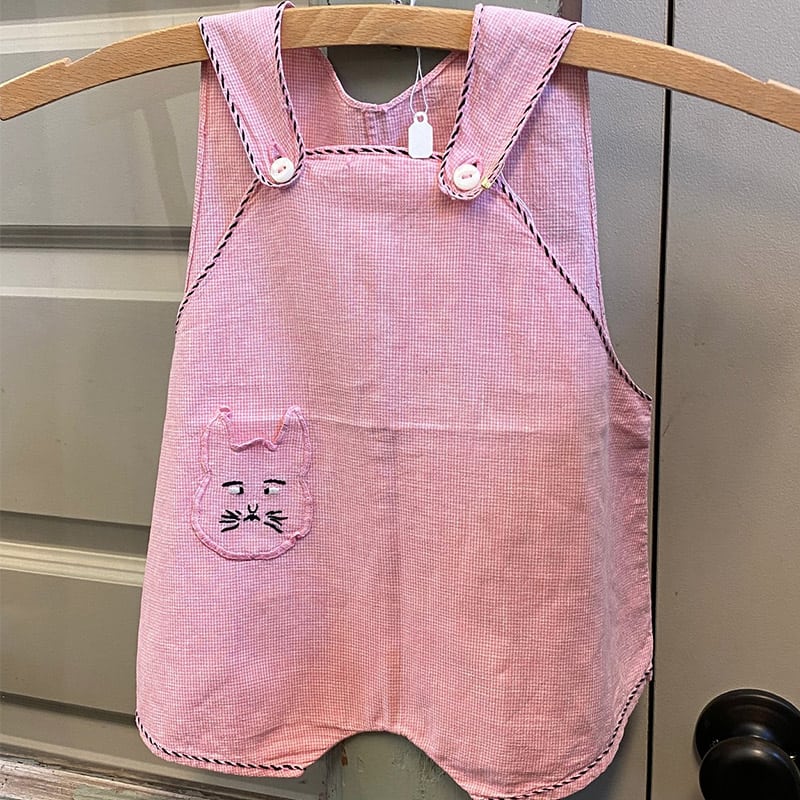
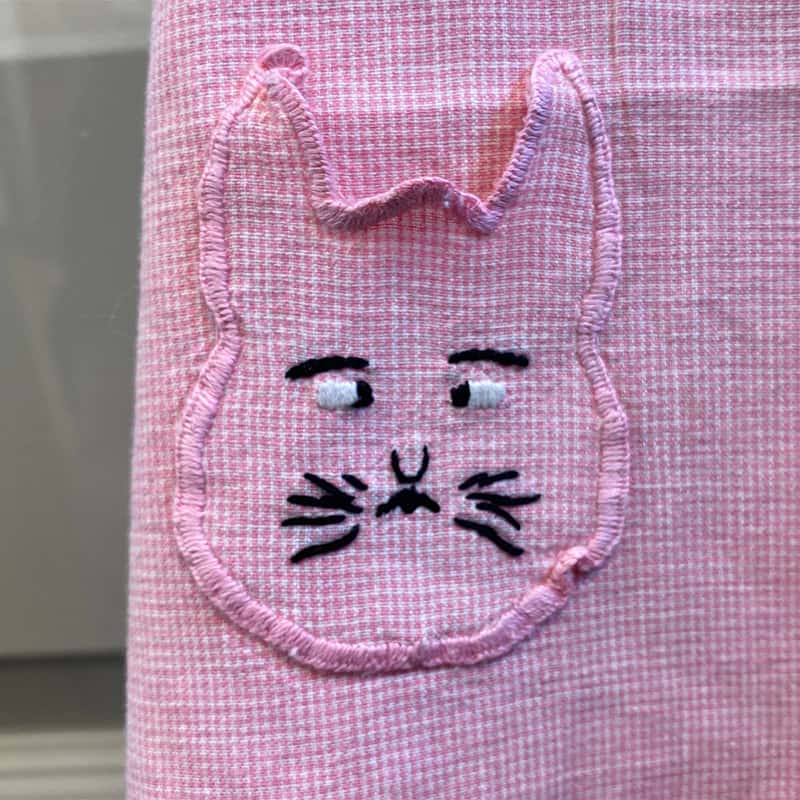
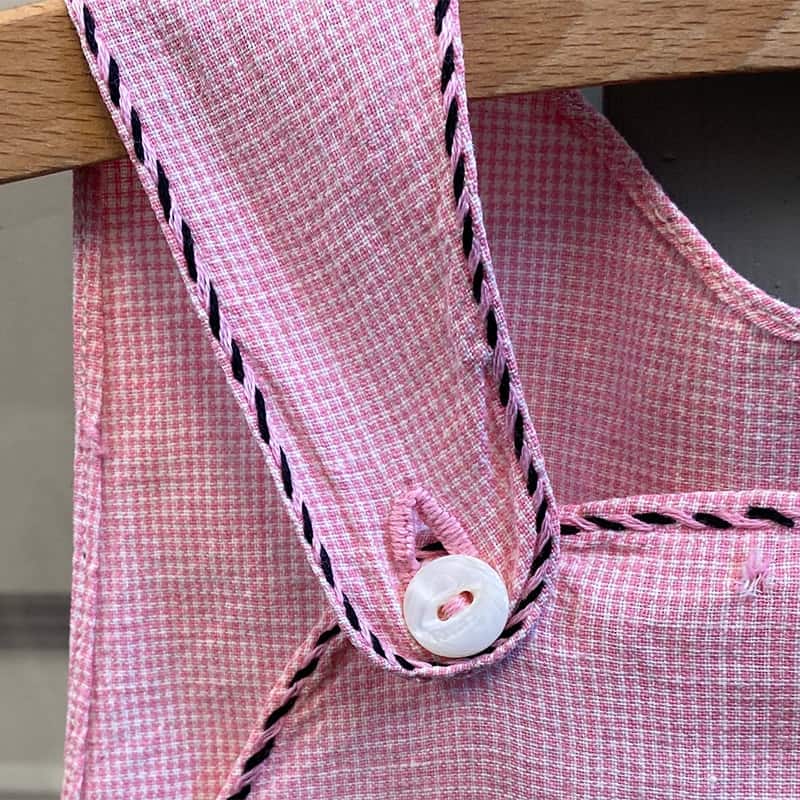
Looking for some fun embroidery ideas?
How about this Storybook Stitches collection. I shared the pillowcase design in last week’s Facebook Live event.
Storybook Stitches: Child’s Play eBook
$12.99
Summertime Art
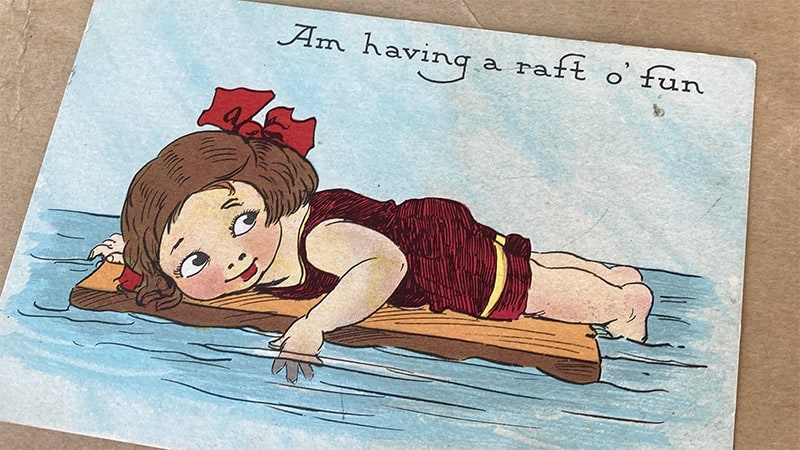
Raft O’ Fun
$4.99

